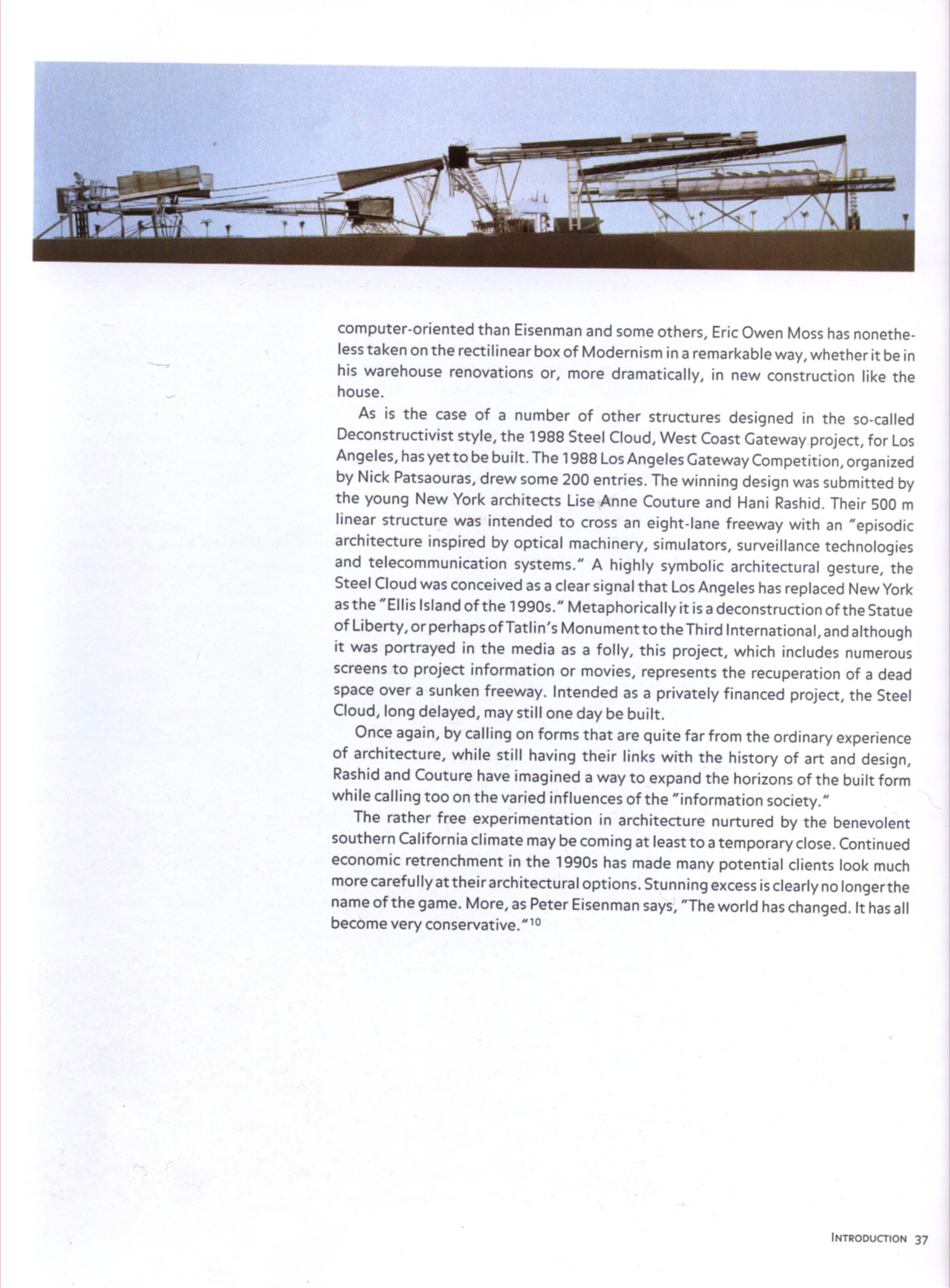New Forms Taschen 034


computer-oriented than Eisenman and some others, Erie Owen Moss has nonethe-less taken on the rectilinear box of Modernism in a remarkable way, whether it be in his warehouse renovations or, morę dramatically, in new construction like the house.
As is the case of a number of other structures designed in the so-called Deconstructivist style, the 1988 Steel Cloud, West Coast Gateway project, for Los Angeles, has yet to be built. The 1988 Los Angeles Gateway Competition, organized by Nick Patsaouras, drew some 200 entries. The winning design was submitted by the young New York architects Lise Annę Couture and Hani Rashid. Their 500 m linear structure was intended to cross an eight-lane freeway with an "episodic architecture inspired by optical machinery, simulators, surveillance technologies and telecommunication systems." A highly symbolic architectural gesture, the Steel Cloud was conceived as a elear signal that Los Angeles has replaced New York as the "Ellis Island of the 1990s." Metaphorically it is a deconstruction of the Statuę of Liberty, or perhaps of Tatlin's Monument to the Third International, and although it was portrayed in the media as a folly, this project, which includes numerous screens to project information or movies, represents the recuperation of a dead space over a sunken freeway. Intended as a privately financed project, the Steel Cloud, long delayed, may still one day be built.
Once again, by calling on forms that are quite far from the ordinary experience of architecture, while still having their links with the history of art and design, Rashid and Couture have imagined a way to expand the horizons of the built form while calling too on the varied influences of the "information society."
The rather free experimentation in architecture nurtured by the benevolent Southern California climate may be coming at least to a temporary close. Continued economic retrenchment in the 1990s has madę many potential clients look much morę carefully at their architectural options. Stunning excess is clearly no longer the name of the gamę. Morę, as Peter Eisenman says, "The world has changed. It has all become very conservative."10
Introduction 37
Wyszukiwarka
Podobne podstrony:
New Forms Taschen 177 American Dreams Peter Eisenman, once a member of the so-called "New York
New Forms Taschen 048 Transport, Communications, Tali Buildings and the Urban Nomad Continuing urban
New Forms Taschen 063 ive to local discourse, and is also forward looking."14 Simply put, not e
New Forms Taschen 183 UH Steven Holi D.E. Shaw and Company Office New York. New York. 1991-92 The re
71714 New Forms Taschen 159 Right Frank Stella "Watson and the Shark” Aluminum on iron base Ove
New Forms Taschen 152 ahead. So, without planning, we built this huge tree house 40 or 50 feet off
25710 New Forms Taschen 162 Lebbeus Woods Havana Project Havana. Cuba. 1995 (project) Lebb
więcej podobnych podstron